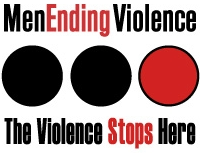Public Safety, Power, and Breath
Summary of a keynote address by Angela Marie MacDougall, Battered Women’s Support Services at Shattering the Silence Conference hosted by The Cridge Centre for Family on October 16, 2025 in Victoria, British Columbia
- Photo courtesy of Karen Mason with SOAR
The Design Flaw We Never Talk About
With deep respect to the Lekwungen peoples on whose traditional territory this event is being held, and the Songhees, Esquimalt and WSÁNEĆ peoples whose historical relationships with the land continue to this day.
Many thanks you to The Cridge Centre for the Family for hosting today
We talk about public safety as if it starts when we step outside, as if danger wears a mask and waits on the street. But for millions of women and gender-diverse people, danger doesn’t wait outside the door. It’s already home before dinner.
That’s the design flaw we never talk about.
Our systems were built on a false divide: the public world of law, work, and politics that centres police, and the private world of family and home. That divide is where violence hides, where policy looks away, and where women’s safety becomes “too complicated” for budgets, ministries, and election platforms.
When violence happens in a parking lot, we call it a crime.
When it happens in a bedroom, we call it a tragedy…and then we move on. Each case treated as individual cases and that there is no connection between the cases. After a femicide police will say – there is no risk to the public.
#DesignedWithSurvivors began as a refusal. A refusal to let public safety be defined by policing, patrol cars, or punishment. Because safety isn’t surveillance—it’s infrastructure. It’s housing, income, health care, and justice that don’t stop at the threshold of a home. This effort was fuelled by our collective rage after the sexual assault of a 14 year old girl in an office building near 41st Avenue and Cambie Street in Vancouver, BC.
So we ask: What would it look like if public safety were designed with survivors in mind?
Turning Truth into Evidence – The Kim Stanton Report
In June, Dr. Kim Stanton released her Independent Systemic Review of the BC Legal System’s Treatment of Intimate Partner and Sexual Violence (hyperlink)—the most comprehensive look at how our justice system responds, or fails to respond, to survivors.
Her first recommendation was radical and long overdue – to officially acknowledge how endemic gender-based violence is and the necessity for all levels of government and systems to build accountability and action toward addressing the violence at every point.
For those of us working on the frontline, her report is more than research rather it forms validation, evidence, and gives our advocacy leverage. It puts government language to what survivors have said for decades – that justice is elusive and in British Columbia is a lottery system where the odds are stacked against women – especially for survivors who are Indigenous, Black and immigrant.
At BWSS, we’ve used the report as an advocacy tool in every possible way:
- To connect femicide, Crown decisions, and systemic impunity in media coverage.
- To brief the Premier, Attorney General, and mayors across the province.
- To build entire campaigns around its core truth: the absence of coordination isn’t an accident – it’s design.
Kim Stanton didn’t tell us something new. She told us something undeniable. And sometimes change begins when our truth becomes someone else’s PDF.
The Birth of #DesignedWithSurvivors
#DesignedWithSurvivors was born out of exhaustion—and imagination.
We were watching violence escalate during and after the pandemic, while the systems meant to protect survivors were producing risk. So, we flipped the question. Instead of asking, “Why didn’t she leave?” we asked, “Why wasn’t it safe to stay—or to go?”
We mapped the barriers—housing, income, legal aid, transportation, childcare, language access—and discovered survivors were doing all the coordination themselves. They were the system.
What if public safety started from their perspective? What if every ministry, every budget line, every government plan began with this question:
If public safety were designed with survivors in mind, what would it look like?
We posted that question across British Columbia. The response was immediate. Mayors wrote back. Councillors called. Survivors reached out saying, “Finally, someone’s describing my life.”
And yes, there’s humour in the title. Because when governments say, “We’re doing our best,” our response is simple: Do better. Do it with survivors.
And if you can’t then let us take the pen and let us lead.
From Local Action, through Provincial Expectations toward National Policy
Municipal Change
A key first step was local. We built a municipal costing model showing that domestic violence costs cities $11,000 per resident, per year—in policing, emergency response, housing, and lost potential.
That changed the conversation. At the Union of BC Municipalities, mayors were asked to stop seeing gender-based violence as a social issue and started seeing it as your responsibility to leverage resources and action.
Since then, dozens of municipalities have move ahead and toward GBV task forces and data pilots. So why don’t we when it’s their partners?
Provincial Action
At the provincial level, we’ve advanced five emergency actions:
- GBV Task Forces in every city and town.
- Frontline Stabilization—a 15% funding increase to prevent service collapse.
- Mandatory IPV Risk Assessment, including strangulation as a red-flag indicator.
- A provincial prevention campaign to end normalization of violence.
- A GBV lead within Public Safety and Attorney General office to coordinate across ministries.
Each aligns with Dr. Stanton’s recommendations and what survivors tell us daily.
Federal Advocacy
Federally, we’ve said it plainly: the National Action Plan on GBV cannot survive an 80% cut to WAGE. You cannot end violence while defunding the very sector that prevents it.
We’ve met with federal Minister of Women and Gender Equality Rechie Valdez to call for sustainable core funding, and advanced policies to Gregor Robertson the Minister of Housing and to federal Justice Minister Sean Fraser to reinforce that safety and housing are inseparable.
And right now, we are appreciating the work of BC Attorney General, Niki Sharma first in commissioning Dr. Kim Stanton’s systemic review and now on the legislative reform to add strangulation and “choking” explicitly to Canada’s new Intimate Partner Violence laws – which may land mid-December 2025. Because in the current Criminal Code, strangulation and other risk factors are not fully recognized for their lethal potential in IPV contexts.
To be plain, it shouldn’t take a coroner’s inquest to make suffocation visible.
Strangulation – The Unspoken Epidemic
Let’s talk about what still gets whispered, even in rooms like this: strangulation.
If a woman has been strangled by her partner, even once, her risk of being killed increases sevenfold. Yet across Canada, it’s rarely recorded. Police call it assault. Doctors call it minor injury. Courts call it hard to prove. Society calls it private.
But strangulation is oxygen deprivation.
Ten seconds: consciousness fades.
One minute: brain injury begins.
Five minutes: death.
Half of survivors show no visible marks. Only 15 percent have injuries that can be photographed. That invisibility has allowed us to minimize what is, in truth, attempted homicide.
And here’s the uncomfortable truth: strangulation isn’t confined to domestic violence. “Sexual choking” has been normalized in mainstream culture. It’s one of the most-searched terms in pornography, and young people are reenacting it—without understanding that it can cause seizures, memory loss, or stroke.
This isn’t about shame. It’s about consent, safety, and education. When sexual strangulation becomes ordinary, girls grow up believing oxygen is negotiable.
At BWSS, we’ve seen the continuum—from fatal strangulation in domestic violence to non-fatal sexual strangulation that’s presented as “consensual.”
The outcomes overlap: brain injury, cognitive decline, post trauma reactions, and depression.
Research is tracking how repeated oxygen deprivation literally changes brain function—reduced left-hemisphere activity, impaired memory, fatigue, and emotional dysregulation.
And when survivors can’t recall details because of brain injury, the system calls them unreliable witnesses. The very symptom of harm becomes the reason they’re not believed.
During the 16 Days of Activism this year, BWSS will launch a national prevention initiative on non-fatal strangulation—connecting education, consent, and safety. Because prevention isn’t a campaign. It’s culture change.
Reframing Power, Breath, and Safety
What is the message a man sending to a victim in a sexualize violence or domestic violence or in an intimate context when he applies pressure to her neck?
How do we reconcile the need to strangle while sexual gratification? That is a gendered question right there… this is an activity that in a heterosexual context is done by men to women – essentially exclusively.
People don’t think there is any risk and that in intimate relationship there is a myth that it can be performed safely.
Was it consensual – we don’t believe consent solves anything – fear is in the room there is no consent – strangulation has exploded in the culture
What women and girls say when given the opportunity to do is that they did not have a chance to consent that their intimate partner strangled without seeking prior consent.
Sexual choking – erotic choking – we call strangulation.
Imagine a system where every strangulation report triggers a mandatory risk protocol?
Where every emergency department screens for neck trauma.
Where every police officer knows “choking” is a homicide predictor, not a dispute.
Where every court recognizes that loss of oxygen is loss of autonomy.
Safety should not depend on which door a survivor walks through. It should be built into how we govern. Because safety isn’t charity. It isn’t awareness. Safety is infrastructure – that we are working to create through #DesignedWithSurvivors
Breath as a Measure of Justice
Strangulation is the moment when someone says, I decide if you breathe.
Our collective work must answer back: You will breathe. You will live. You will be believed.
As anti-violence workers as feminists and as survivors we have spent decades adapting to systems never designed for us. Now we design back—with survivors, with evidence, and with breath as our measure of justice.
So, as you read this, ask yourself:
What would it look like if public safety were designed with survivors in mind?
Because when it is, everyone breathes easier.








